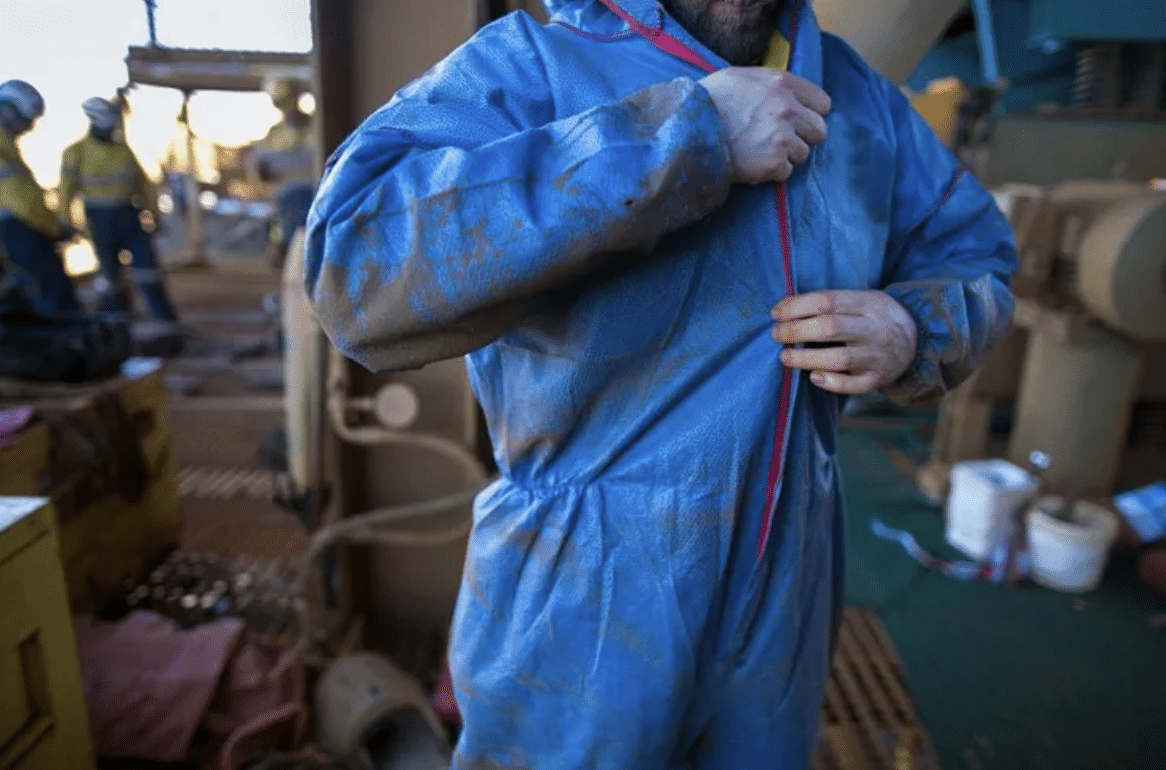Simpson Millar Solicitors, a preeminent legal entity specialising in representing individuals grappling with work-related industrial disease illnesses, sounds a clarion call for intensified endeavors aimed at fortifying the well-being of employees. Recent data underscored the magnitude of the challenge, revealing that a staggering 1.8 million workers encountered work-related ill health during the period of 2021/22.
The most recent data disseminated by the Health and Safety Executive (HSE) serves as a stark reminder, unveiling that there were 2,268 fatalities attributable to mesothelioma, a dire consequence of historical asbestos exposure.
While a discernible decline in certain industrial disease instances is perceptible, the trajectory towards ensconcing the safety and security of the UK’s workforce upon a solid foundation remains a formidable task, necessitating continued vigilance and resolute action.
Perils Inherent to Occupational Exposures Persevere
Further revelations from the HSE illuminate that, on average, the past three years bore witness to an approximate tally of 19,000 fresh cases marked by respiratory and lung ailments, effectively linked to occupational circumstances, either causing their inception or exacerbating their severity.
Tragically, an alarming count of approximately 12,000 deaths precipitated by lung diseases annually can be traced back to bygone occupational exposure, encapsulating afflictions such as asbestos-related lung cancer, mesothelioma, non-asbestos-related lung cancer, and chronic obstructive pulmonary disease (COPD).
Encouraging Mesothelioma Trends Coupled with Lingering Apprehensions
In the annals of 2021, Great Britain recorded a total of 2,268 mesothelioma fatalities. This figure contrasts favorably with the erstwhile yearly average of 2,520 deaths spanning the duration from 2012 to 2019. This nuanced decline finds concordance with prior projections that envisaged a gradual reduction in annual fatalities during the 2020s.
Intriguingly, a substantial majority of mesothelioma incidents currently materialize amongst individuals surpassing the threshold of 75 years. Segmentation on gender lines delineates the narrative, revealing that the toll encompassed 1,867 male casualties.
The arena of risk is particularly pronounced for men who were previously engaged within the construction industry during the epoch characterised by extensive asbestos application. This group is staggeringly predisposed to mesothelioma, with roughly 85% of male mesothelioma cases tracing their origins back to asbestos exposures transpiring within occupational settings. It is notable that the latent onset of the disease, spanning at least three decades, signifies that the majority of present-day mesothelioma deaths emanate from exposures that transpired during the epoch when asbestos experienced widespread industrial utility, extending from the 1950s to the 1980s.
Succinctly, vocations intricately linked to the construction domain, such as carpenters, plumbers, and electricians, continue to be inscribed upon death certificates attributing them to mesothelioma. Moreover, professions intertwined with the shipbuilding milieu, exemplified by metal plate workers, recurrently surface with greater frequency than anticipated. For the demographic born within the 1940s, a substantial 46% of mesotheliomas bear allegiance to former builders, wherein 17% are inextricably linked to carpentry occupations. Notably, the pronounced utilisation of insulation boards infused with brown asbestos (amosite) for fire-retardant purposes in construction structures stands as a focal factor propelling elevated risks for these erstwhile practitioners.
It is, however, imperative to acknowledge that the data also accentuates the occurrence of 401 female deaths engendered by mesothelioma in 2021, with predictions further foretelling an unabated trend of 400-500 annual female fatalities in connection to the ailment throughout the 2020s.
This emergent phenomenon is attributed to a multitude of factors, ranging from occupational settings such as schools and hospitals to secondary and domestic exposures, encompassing instances where women encountered asbestos fibers transported into the domestic realm by family members.
Intriguingly, a statistical revelation underscores that approximately 21,500 schools within Britain house edifices adorned with asbestos components, thereby mirroring a latent risk. Insight shared by the National Education Union unveils that an approximate count of 400 former educators have succumbed to the ailment since 1980, with a staggering 300 amongst them meeting this fate since the advent of the 21st century.
Deborah Krelle, Partner at Simpson Millar and Head of Industrial Disease, inscribed her concern into the discourse while placing due emphasis on the perpetual vigilance requisite for the preservation of workers’ health. She elucidates, “The HSE’s latest statistical revelations conclusively demonstrate that a substantial realm of labor still lies before us to combat the prevalence of work-related industrial disease illnesses. This particularly encompasses those arising from exposure to toxic agents and chemicals, as well as hazardous working conditions.”
She reiterates, “The data underscores the vulnerabilities inherent to occupational lung diseases, not only influencing the affected individuals but also resonating on an economic level. It unequivocally reiterates the paramountcy of prioritising the health and well-being of workers as the foremost consideration.”
“The decline in deaths catalysed by mesothelioma is a heartening trend; however, it is imperative to acknowledge that risks remain prevalent in the realm of educational institutions and other publicly owned edifices. The call for the government to architect a comprehensive strategy for the strategic removal of asbestos, along with the establishment of a national register for asbestos-containing properties, is well-founded. The need of the hour necessitates the regular monitoring of air quality within edifices harboring asbestos, coupled with the elevation of minimum training standards.”
“Meanwhile, within the precincts of Simpson Millar, we are unflinchingly devoted to advocating for the rights of those ensnared within the clutches of industrial ailments. Our endeavor to secure justice and compensation for these individuals remains undeterred.”
Simpson Millar Solicitors issues a clarion call, summoning employers, authorities, and entities to enshrine the health and well-being of their labor force as an absolute priority. By amalgamating collective efforts, a salubrious work environment can be actualised, thereby mitigating the ramifications of work-related industrial diseases upon employees and their extended circles.






